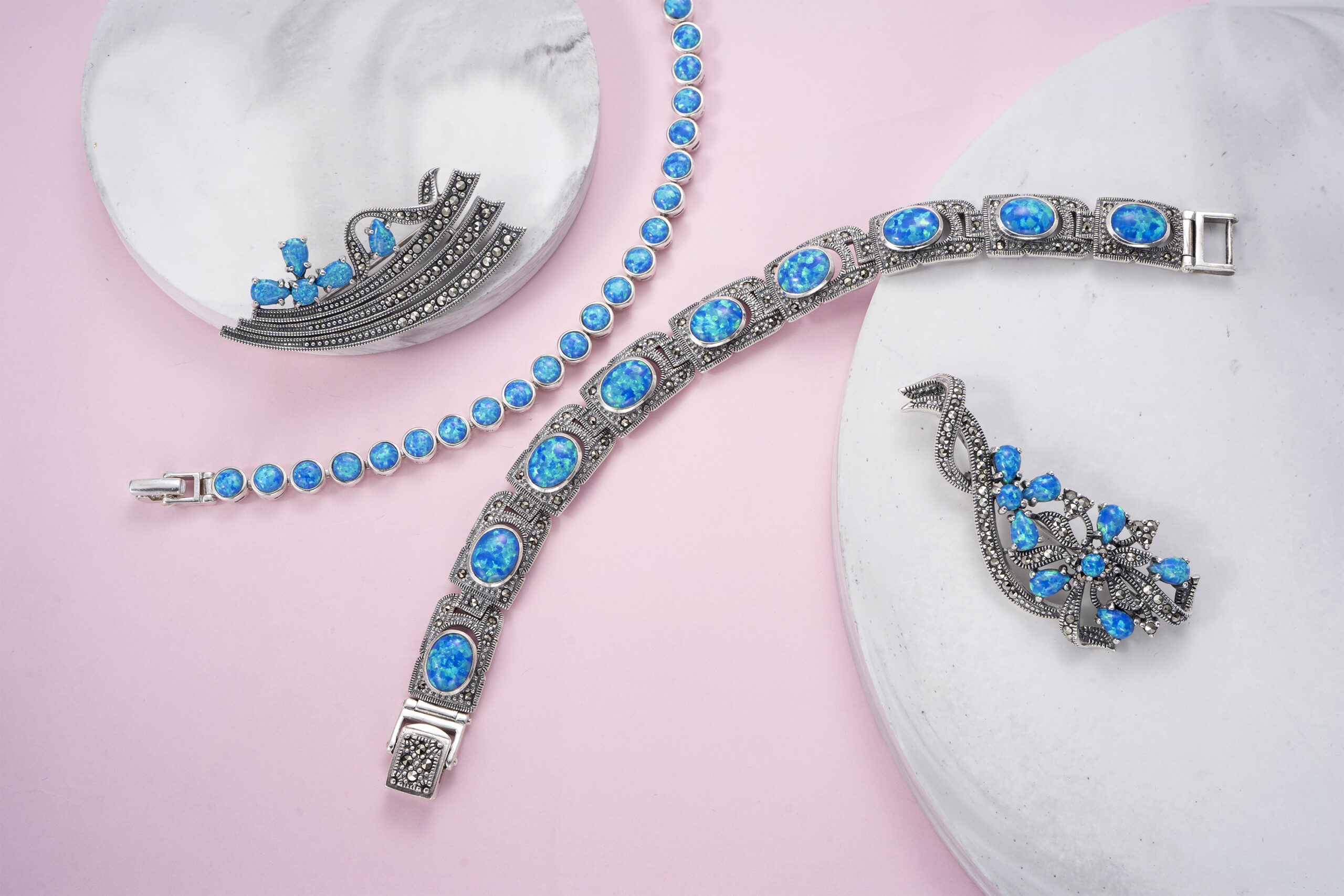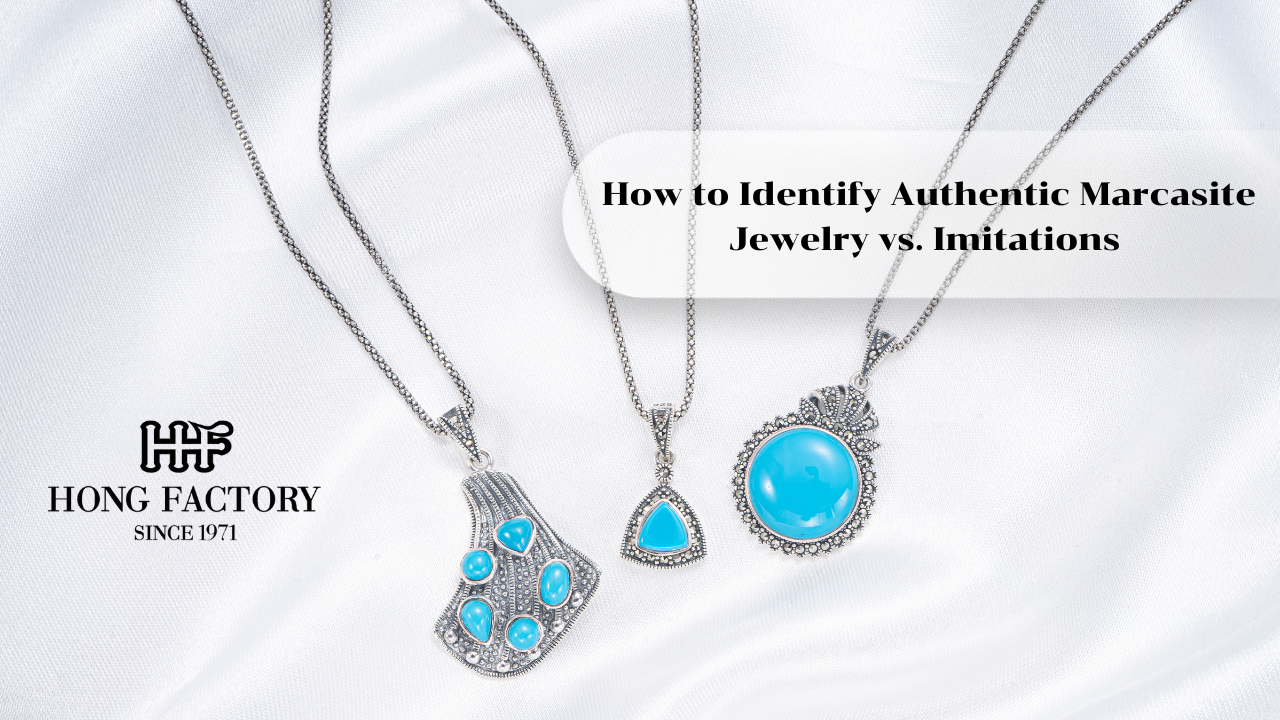Identifying authentic marcasite jewelry is essential for collectors, vintage enthusiasts, and everyday jewelry buyers who want to ensure quality and value. Because marcasite jewelry has grown increasingly popular, the market today contains both genuine handcrafted pieces and lower-quality imitations made with glued stones or cheap metals. Understanding the differences between real and fake marcasite helps you invest wisely and appreciate the craftsmanship behind authentic pieces.
This complete 1,200-word guide will teach you how to distinguish authentic marcasite jewelry from imitations through material checks, craftsmanship clues, stone inspection, and hallmark verification.
Authentic marcasite jewelry is made with precision-cut pyrite stones set in sterling silver, usually using tiny prongs. Fake pieces often use glued metals, imitation stones, or low-quality settings. Let’s explore the clearest ways to identify the real thing. Marcasite stone
1. Check the Material: Real Marcasite Uses Pyrite, Not Marcasite Mineral

A major misconception is that marcasite jewelry uses the mineral marcasite. In reality, authentic pieces are made with pyrite, a durable mineral with a metallic sheen.
How to identify real pyrite marcasite stones:
- Pyrite has a metallic, mirror-like shine.
- Stones appear reflective rather than glittery.
- The surface has sharp, geometric facets.
Fake marcasite often uses:
- Glass
- Plastic
- Resin stones
- Cheap metallic coatings
These imitations lack the weight, depth, and shine of real pyrite.
2. Examine the Stone Setting: Authentic Pieces Use Prongs, Not Glue
The most defining feature of authentic marcasite jewelry is its prong-set stones.
Real marcasite stones:
- Are individually set with tiny metal claws.
- Stay secure for decades when crafted well.
- Sit neatly and evenly in the silver base.
Fake or low-quality marcasite:
- Often uses glue instead of prongs.
- Stones may appear misaligned.
- Glue residue may be visible around the stones.
- Stones fall out easily.
If you see glue, it’s not authentic marcasite.
3. Check the Metal: Real Marcasite Jewelry Uses Sterling Silver
Authentic marcasite jewelry is almost always made with 925 sterling silver.
Look for hallmarks like:
- “925”
- “STERLING”
- A maker’s stamp (common in vintage pieces)
Fake marcasite jewelry often uses:
- Nickel alloy
- Stainless steel
- Brass
- Unknown alloys
Low-quality metals tarnish quickly and feel lightweight compared to sterling silver.
4. Inspect the Craftsmanship and Detailing
Authentic marcasite jewelry is known for its intricate and refined craftsmanship.
Signs of high-quality craftsmanship:
- Clean, symmetrical silverwork
- Consistent prong settings
- Smooth edges without rough finishes
- Balanced designs with strong structure
Signs of imitation craftsmanship:
- Rough surfaces
- Uneven settings
- Poorly cut patterns
- Asymmetrical stone placement
Handcrafted details are a strong indicator of authenticity.
5. Observe the Back of the Jewelry
The back of marcasite jewelry can reveal a lot about its authenticity.
In genuine marcasite jewelry:
- The silver base is solid and smooth.
- The metal may have oxidized areas for contrast.
- Prong settings are visible from the back.
In fake pieces:
- Backing may be hollow or overly thin.
- Metal looks cheap or discolored.
- There may be excess glue behind the stones.
A strong, well-crafted backing indicates quality.
6. Check the Weight of the Jewelry
Sterling silver and genuine pyrite stones have a noticeable weight.
Authentic marcasite jewelry feels:
- Solid
- Substantial
- Smooth and sturdy
Fake jewelry feels:
- Too light
- Hollow
- Flimsy or fragile
Weight is a reliable indicator when combined with other factors.
7. Look for Consistent Stone Shape and Shine

Real marcasite stones are precision-cut with faceted surfaces.
Authentic marcasite stones:
- Sparkle sharply under light
- Have consistent geometric shapes
- Reflect light rather than glitter
Fake stones:
- May appear shiny but lack depth
- May be coated with metallic paint
- Often have irregular or rounded shapes
Stone uniformity is a sign of quality craftsmanship.
8. Test for Tarnish on the Metal (Gently)
Sterling silver naturally tarnishes over time.
Signs of real sterling silver:
- Slow, natural tarnish
- Tarnish wipes off with a polishing cloth
Fake metals:
- Peel or flake
- Turn green or black unevenly
- May smell like chemicals
A small patch test with a silver polishing cloth can help confirm authenticity.
9. Consider the Style and Era of the Design
Certain design features can indicate whether a piece is genuine.
Authentic vintage marcasite jewelry usually features:
- Victorian floral motifs
- Art Deco geometric patterns
- Hand-engraved details
- Oxidized silver backgrounds
Modern imitations often have:
- Overly shiny or reflective surfaces
- Simplistic shapes
- Machine-produced patterns
Understanding historical styles can help identify authentic pieces.
10. Buy from Trusted Sellers
One of the safest ways to ensure authenticity is to purchase from reputable sellers.
Reliable sources include:
- Reputable jewelers
- Antique stores
- Verified online sellers
- Auction houses
- Certified vintage dealers
Avoid sellers who:
- Use stock photos
- Provide vague descriptions
- Offer extremely low prices
Authentic marcasite jewelry retains long-term value, so it’s worth buying from trustworthy sources.
11. Ask for Documentation or Certificates (When Possible)
High-quality or rare vintage pieces may come with:
- Certificates of authenticity
- Maker’s information
- Historical background
While not always available, documentation adds credibility.
12. Understand Price Expectations
Authentic marcasite jewelry is affordable but not “cheap.”
Typical prices for real pieces:
- Small studs: moderately priced
- Pendants and rings: mid-range
- Vintage Art Deco pieces: higher value
If a deal seems too good to be true, the piece is likely fake.
Conclusion
Identifying real marcasite jewelry is a skill that combines visual inspection, knowledge of materials, and awareness of craftsmanship. By examining stone settings, metal quality, hallmarks, and overall construction, you can confidently distinguish authentic marcasite from imitations.
Whether you’re collecting vintage pieces or purchasing a new accessory, this guide ensures you invest in jewelry that carries real value, beauty, and history.
This educational, detailed article is written in a blog-friendly tone—perfect for high-quality PBN content.
